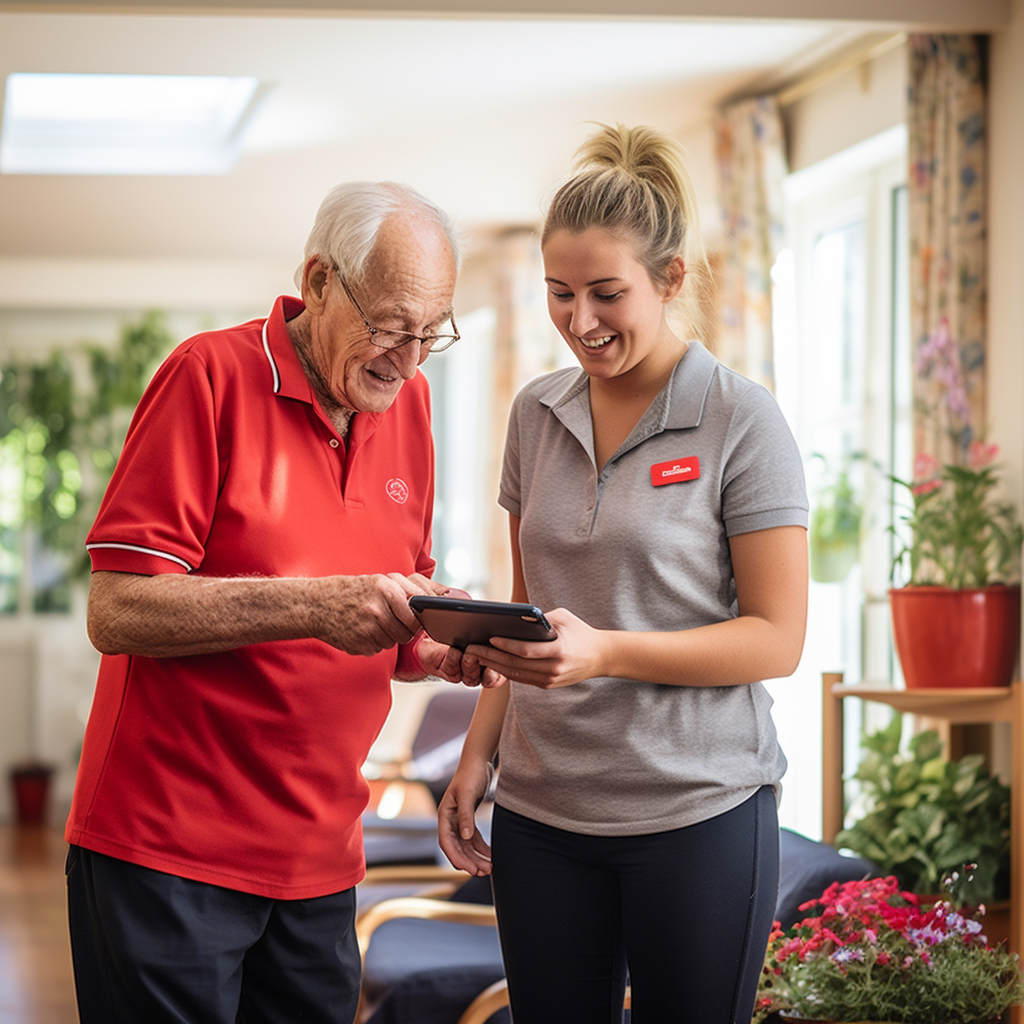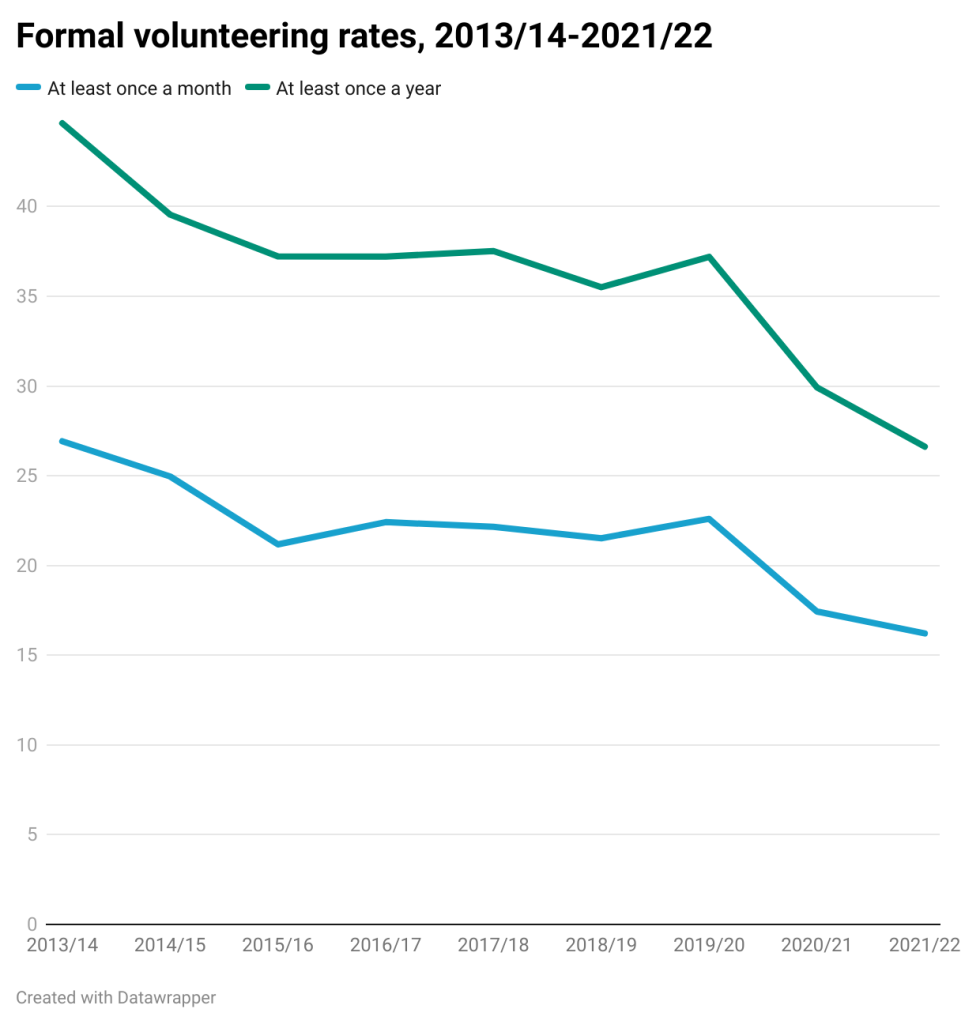The context
In the last year, several studies from leading organisations have put into sharp focus a huge problem affecting the charity sector across the UK: less and less people giving up their time to volunteer.
While 4 million people volunteered during the pandemic, the return to normal work lives has seen a substantial drop in volunteer numbers. The charity sector needs to find ways to increase accessibility, reduce the boundaries to entry into a volunteer role, broaden its demographic and lower the average age of volunteers.
While the government has launched specific initiatives to encourage people to volunteer (eg, Big Society, the Big Help Out), there has been no real effort to address the technological and digital problems in the charity sector.
The state of volunteering in the UK
Plenty of research has been published in recent months that highlights an issue that those working on the ground in charities across the country, will be all too aware of.
The data
The Time Well Spent survey from the NCVO found in the last 5 years:
Those raising money or taking part in sponsored events has fallen by 48%: from 11% to 6%
Those organising or helping run an activity has fallen by 52%: from 14% to 7%
Those campaigning on behalf of a charity has decreased by 49%: from 8% to 4%
That indicates a substantial drop in volunteering from pre-pandemic levels. And more data from the Charities Aid Foundation’s UK Giving report backs this up further. Their study, based on 13,000 interviews, found that:
Only 13% of people said they volunteered in the last year (compared to 17% pre-pandemic). This represents around 1.6 million fewer people volunteering compared to five years ago.
Only 6-7% of 16-44 year olds, and 5% of 45-54 year olds had volunteered in the past year.
Finally, there’s the findings from the UK government’s Community Life Survey from 2021/22. Their data showed a notable drop: with the percentage of the UK population volunteering formally at least once a month dropping from 23% in 2019/20 to 16% in 2021/22.
Source: NCVO based on data from the Community Life Survey, 2021/22
Our take
These are the kind of stark numbers that make the team at SoGood sit up and take notice, questioning why people (and young people in particular) are not getting involved with charities in their local community.
The benefits of volunteering remain clear. The same poll from the NCVO found that people reported very positive experiences from their volunteering, with three quarters saying it improved their mental health, and more than 7 out of 10 agreeing that it gave them new skills to benefit their career and exposed them to new life experiences.
Volunteering opportunities bring benefits that people are well aware of, so what’s stopping them from regular involvement?
The reasons why volunteering has decreased
When analysing the why, it’s important to take into account the various external factors at play. Something that can’t be overlooked is the broader economic climate of the UK. The cost of living crisis has meant more of us are struggling to make ends meet. That, understandably, means less time and resources to devote to seeking out volunteering opportunities. You’re unlikely to have time to get involved with a local food bank or charity shop when you’re working all the hours available to pay your bills.
Then there are more intangible factors: generational shifts in terms of how people want to contribute to their communities, digital distractions and increased social isolation in modern societies. There’s also a typical drop-off in participation during the transition from youth to adulthood as we move into the world of work and start families – with all the responsibilities that brings with it.
We’re seeing a lack of innovation in ways of presenting opportunities for volunteering that fit in with working patterns and daily lives. The growth of the gig economy, temp jobs and non-standard working hours are all contributing to this.
A lack of innovation, flexibility and awareness are all problems we believe might be tackled through digital transformation.
The problem: archaic and inflexible systems
When it comes to the practicalities of volunteering in the UK, it’s fair to say that ways of finding opportunities to give back to communities haven’t significantly evolved from the 20th century (and, in some cases, the 19th).
It typically goes like this: you find a local charity or organisation that you want to support, then contact them to find out about contributing and becoming a volunteer. You fill out forms and go through any necessary training (and potentially lengthy DBS checks). Only then is the organisation able to let you know where and when they need your help. Or alternatively, you turn up somewhere ad-hoc in the hope that the charity has a volunteering role for you on that day.
It’s an inflexible, antiquated process with numerous barriers for entry that doesn’t fit in with the way people live in the 21st century, nor the way they expect to engage with services which, today, are digital, accessible and on-demand. This is one of the main reasons that so many volunteers tend to be retired or older people who are able to work 9-5 in charity shops.
Where volunteer hubs do exist there tends to be plenty of opportunity for improvement. See, for example, the government’s volunteering hub or Southend Volunteers Hub. Some charities, like the British Red Cross or Trussell Trust, have their own systems but there is nothing joined up nationally in a meaningful, user-friendly way. It’s an area that is ripe for transformation.
The solution: a centralised digital volunteering hub
SoGood is aiming to fix this problem with the creation of a digital national volunteering hub designed specifically for modern working patterns. Our plan is to build a resource that enables charities across the country to plug into a pool of motivated, willing and capable volunteers who are eager to get involved in their community, gain experience and improve their skills. At the same time, this would enable those seeking volunteering positions to do so in a way that reflects modern lifestyles.
There is clear and obvious demand for this from the charities point of view: this is a recruitment service they’ll be able to use for free. By plugging their resource requirements into the system, they’ll have access to a huge talent pool of interested people. And for volunteers, it creates a joined-up, centralised search platform for discovering relevant, local opportunities.
This solution aligns with our drive to bring modern practices and technology to the Third Sector — enabling charities to help more people and have a greater impact. It’s also a solution we see creating a virtuous circle: the perception of increased efficiency will boost donor sentiment and lead to more effective fundraising.







